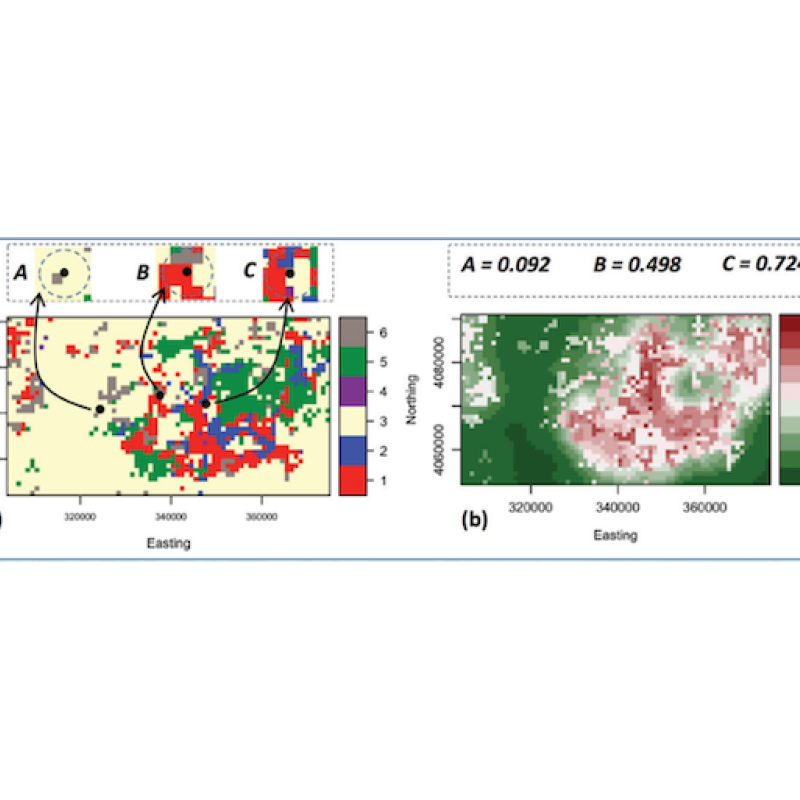Novel methods for Spatial Autocorrelation

- Suggested electives: Anything related to Spatial Statistics, and the Species Distribution and Environmental Niche Modelling elective
- The topic is open and suitable for GEM students in track 3 – GEM for Ecosystems & Natural Resources.
Spatial autocorrelation is a property of any dataset that is linked to locations. So both raster and vector data have this property. Also, this is a property that is common to both quantitative data like continuous measurements and qualitative data, such as categories. Most studies and metrics that investigate spatial autocorrelation ignore categorical data, and only focus on quantitative data. But a relatively new index called ELSA (Entropy based Local indicator of Spatial Association; Naimi et al. 2019) can calculate spatial autocorrelation for both quantitative and qualitative data. Since it’s introduction, it has been use by a few studies , but it’s full potential has not been optimally explored. This topic gives you a change to dive deeper in the exploration and analysis of this metric and showcase it’s suitability (or lack thereof) for different applications. For example, Spatial Autocorrelation is a common issue in spatial interpolation techniques like Species Distribution Modelling. So correcting for spatial autocorrelation is often needed. This is often based on common inicators like semi-variograms (e.g. see Harisena et al. 2021). But how would this work out when ELSA would be used instead, which also allows to assess autocorrelation in categorical data, like land use or land cover data.
There are multiple directions this research can go in, and in discussion with the candidate a definitive formulation of the topic can be defined, as long as it revolves [around the assessment of spatial autocorrelation with the new metric ELSA. This means that in addition to the above example on SDM’s, also applications in urban planning, or land cover classifications etc can be defined.
- Naimi, B, Hamm, NAS, Groen, TA, Skidmore, AK, Toxopeus, AG & Alibakhshi, S 2019, 'ELSA: Entropy-based local indicator of spatial association', Spatial statistics, vol. 29, pp. 66-88. https://doi.org/10.1016/j.spasta.2018.10.001
- Harisena, N, Groen, TA, Toxopeus, AG & Naimi, B 2021, 'When is variable importance estimation in species distribution modelling affected by spatial correlation?', Ecography, vol. 44, no. 5, pp. 778-788. https://doi.org/10.1111/ecog.05534
